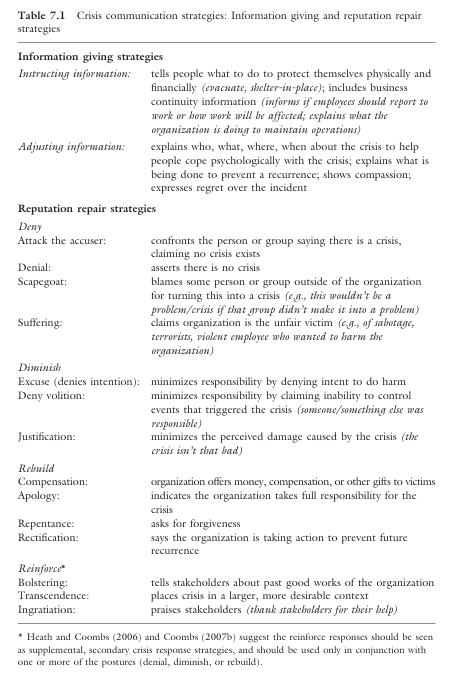
We're working on getting insights, tools, and techniques straight to your inbox on a weekly basis. No commitment required, we'll reach out again when we're ready to see if you still want to receive weekly emails.
By submitting this form, you agree to receive recurring marketing communications from Piar at the email you provide. To opt out, click unsubscribe at the bottom of our emails. By submitting this form, you also agree to our Terms & Privacy Policy
Cultivating stakeholder trust in a crisis depends on how organizations handle every communication touchpoint, not merely how fast they respond. Credibility builds through transparency, accountability, and genuine care demonstrated consistently across interactions. Organizations succeed when they remain open to feedback, acknowledge missteps, and engage authentically with stakeholders throughout the crisis period.
A comprehensive 2023 review in Humanities and Social Sciences Communications shows the field's progress: Crisis scholarship has shifted from organization-centered reputation management (Image Restoration Theory, Situational Crisis Communication Theory) to approaches that foreground stakeholder experience and differentiated communication. Scholars now recognize the importance of tailored, "multivocal" crisis strategies and dialogic engagement. Research in the Journal of Public Relations Research confirms that dialogic communication can deepen relationship commitment and trust following a crisis when teams move beyond broadcasting and engage in genuine two-way conversation.[1][2]
Organizations that treat all stakeholders identically during crises consistently underperform those that differentiate by audience segment. Dialogic approaches, where organizations both invite and respond to feedback, produce stronger post-crisis relationship quality when backed by operational infrastructure for tracking and acting on stakeholder input. This requires two-way channels and routines for real-time sensemaking across multiple conversations. When companies improvise "listening" processes during a crisis, stakeholders often read the late shift as inauthentic.[2][1]
A European survey published in the Public Relations Review (2017) highlighted the heightened stakes of crisis periods. During a crisis, stakeholder contact spikes as journalists, citizens, investors, and employees all demand more transparency and reassurance. PR professionals experience higher pressure, more frequent requests, and a decrease in deference for official statements. Organizations that explicitly acknowledge uncertainty and commit to provide information as soon as it becomes available maintain more stakeholder goodwill than those that withhold communication or offer premature certainty.[3]
Empirical research from Ghana's financial sector demonstrates this principle clearly. Transparency and timeliness in communication preserve stakeholder confidence, while delay or vagueness erodes it even where regulatory contexts and information reliability present challenges. Leadership credibility and a willingness to openly address the crisis rather than disguise or deflect prove instrumental in protecting trust.[4]
Internal dynamics shape the tone and credibility of all external communication. A 2024 study in Frontiers in Communication confirms that employees, when well-informed and supported through timely, emotionally intelligent internal communication, become powerful trust builders. Disjointed or delayed messaging undermines even well-designed public statements. Managers who provide consistent, empathetic communication and acknowledge uncertainty with staff become conduits for resilience, helping the organization project unified clarity to external audiences.[5]
Studies from Sweden show the "halo effect" of high-trust societies. Organizations starting with strong stakeholder trust receive crucial leeway to manage ambiguity in crises, while those with low trust face initial skepticism regardless of response quality. The same body of research spotlights the increasing influence of politicized or culturally contingent trust. Universal communication approaches are giving way to adaptive strategies tailored to stakeholder worldviews and local norms.[6]
Situational Crisis Communication Theory, as developed by W. Timothy Coombs, remains central for matching PR responses to crisis type. Experiments and reviews consistently report that "rebuild" strategies, which openly acknowledge responsibility and outline corrective action, restore trust most effectively. Defensiveness, outright denial, or silence tend to intensify skepticism and erode confidence further.[7][8]

Digital platforms shape both the speed and vulnerability of organizational messaging. Fieldwork and netnography confirm that inconsistency between digital and traditional messaging, sluggish response times, and lack of emotional intelligence increase the risk of backlash. Once digital credibility is lost, organizations find it much harder to regain even with demonstrable practice changes.[9]
After-action reviews, collaborative documentation of what worked and what failed, and the updating of crisis playbooks form the foundation of organizational learning. Research in Corporate Communications and the Journal of Marketing Analytics demonstrates that teams who gather feedback and update training and templates accordingly prevent repeat mistakes and institutionalize better responses.[10][11]
Organizations can strengthen their crisis communication capacity through several concrete actions. Systematically rehearse and document internal and external communications. Use multiple channels and ensure message consistency across all platforms. Survey or otherwise measure stakeholder trust before, during, and after crises, tracking specific trust dimensions such as competence, benevolence, and integrity rather than general sentiment alone. Report back to both internal and external stakeholders on what has been heard and what is changing in response. Shift from generic to differentiated communication while maintaining transparency as a constant principle across all stakeholder segments.
For scripts, worksheets, and response prompts: Crisis Response Patterns toolkit at Piar Resources
...
Tanzeel “Tan” Sukhera is the Co-founder & CEO of Piar. Tan is based in Montreal, and has 7 years of experience in Media Monitoring & Social Listening, PR & Comms Measurement, Strategy &Analysis. Through events and workshops, Piar helps PR and communication leaders apply behavioral decision science to real-world campaigns, messaging, and stakeholder work. Learn more or reach out at piar.co.
LinkedIn: https://www.linkedin.com/in/tsukhera/ 👈